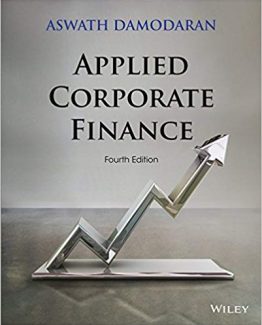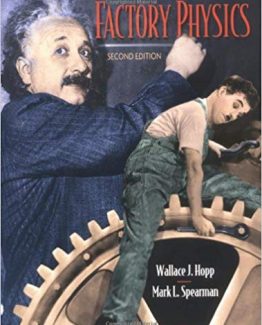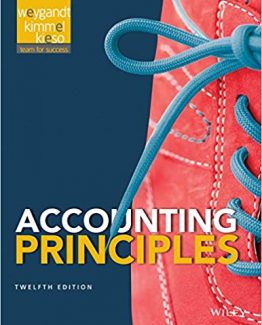Project Management Leadership: Building Creative Teams 2nd Edition by Rory Burke, ISBN-13: 978-1118674017
[PDF eBook eTextbook]
- Publisher: Wiley; 2nd edition (April 14, 2014)
- Language: English
- 384 pages
- ISBN-10: 9781118674017
- ISBN-13: 978-1118674017
Project Management Leadership is a comprehensive guide to the human factors involved in Project Management, in particular the leadership skills required to ensure successful implementation of current best practice. It provides the latest insights on team building, motivation, collaboration, and networking skills, and the way these can be harnessed to manage a successful project. Exercises and worked examples are provided throughout.
Project Management Leadership: Building Creative Teams is a comprehensive guide to the human side of project management. It addresses the key leadership skills and managerial styles needed to effectively manage a project team, encompassing a number of key topics:
- Team building.
- Project governance.
- Negotiation and networking.
- Empowerment and collaboration.
Project Management Leadership will help you master the fundamental knowledge needed to become a project leader. The wealth of information, examples and exercises will teach you the best ways to effectively manage teams, stakeholders and participants, whilst hitting targets throughout the project lifecycle.
Table of Contents:
Cover
Title
Copyright
Foreword
Authors’ Notes
Chapter 1: Introduction to Project Management Leadership
How to Use This Book
1. History of Project Management
2. Project Manager’s Portfolio of Skills
3. Project Management Body of Knowledge
4. Project Lifecycle
5. Project Management Leadership
Chapter 2: Project Governance and Ethics
1. Project Lifecycle
2. Project Governance
3. Project Ethics
Chapter 3: Project Leadership BoK
1. What is Project Leadership?
2. Project Vision and Inspiration
3. Leadership Vision vs. Project Lifecycle
4. Project Strategy
5. Empowerment and Self-Control
6. Control Freaks
7. Collaboration
8. Success
Chapter 4: Project Organization Structures
1. What is a Project Organization Structure?
2. Functional Organization Structure
3. Matrix Organization Structure
4. Pure Project Organization Structure
Chapter 5: Leadership Behaviors
1. What are Leadership Behaviors?
2. Competent Project Leadership
3. The Logic of Failure
4. Covey’s Seven Habits
5. Effective and Unsuccessful Leadership Behaviors
Chapter 6: Leadership Theories and Styles
1. Leadership Theories
2. Action Centered Leadership
3. Situational Leadership
4. Authority
5. Emotional Intelligence (EI) Leadership Styles
6. Linking Leadership Styles to Projects
Chapter 7: Power to Influence
1. What is Power to Influence?
2. Matrix Organization Structure
3. Responsibility–Authority Gap
4. Power to Influence
5. Power and Influence vs. Project Lifecycle
6. Formal Authority
7. Coercive Power
8. Reward Power
9. Expert Power
10. Charisma Power
11. Communication Power
12. Leadership Power
Chapter 8: Resistance to Change
1. What is Resistance to Change?
2. Why is There Resistance to Change?
3. What is the Rationale for Resisting the Change?
4. What Can the Leader do About Resistance to Change?
5. Ideas About How Change Happens
6. Everett Rogers – Diffusion of Innovations
7. Conclusions
Chapter 9: Emotional Intelligence
1. Emotional Intelligence Domains
2. The Four Emotional Intelligence Domains
3. Leaders Need Emotional Intelligence (EI)
4. Perception of Emotional Competence
Chapter 10: Leadership vs. Management
1. Leadership vs. Management
2. Dealing with People
3. Entrepreneurship Skills
Chapter 11: Working with Stakeholders
1. Who is a Project Stakeholder?
2. Stakeholders vs. Project Lifecycle
3. Stakeholders and Interested Parties
4. Networking
Chapter 12: Project Teams
1. Project Teams vs. Project Lifecycle
2. Why Companies Use Project Teams
3. The Individual’s Purpose for Team Membership
4. Team Leader’s Ability
5. Team Charter
6. Why Teams Win
7. Why Teams Fail
Chapter 13: Teams vs. Groups
1. The Difference Between Groups and Teams
2. Moving from Being a Group to Being a Performing Team
3. Working Groups or Teams?
4. How Can we Achieve Significant Performance Results?
5. Dangers of High Group Cohesion: Groupthink
Chapter 14: Team Roles
1. Summary of Team Roles
2. Belbin’s Team Roles
3. Avoiding Confusion Between Similar Types
4. Belbin’s Team Styles in a Leadership Context
5. Combining Primary and Secondary Styles
6. Team Roles Surfacing at Different Stages of a Project
7. How to Use Team Role Models
Chapter 15: Team Development Phases
1. Team Focus
2. Team Performance
3. Forming Phase
4. Storming Phase
5. Norming Phase
6. Performing Phase
7. Maturing and Declining Phases
Chapter 16: Team-Building Techniques
1. What is Team Building?
2. Level One: Interpersonal Team Building
3. Level Two: Team Roles
4. Level Three: Shared Vision
5. Level Four: Task Focused
6. Outdoor Team Building
Chapter 17: Coaching and Mentoring
1. Coaching Helps us Get Better at What we Already Do
2. Coaching Skills
3. Mentoring
4. The Relationship
5. Feedback
Chapter 18: Negotiation
1. Win–Lose Strategy
2. Win–Win Strategy
3. Lose–Lose Strategy
4. Negotiation Tactics
5. Networking Skills
6. Bargaining
7. Dispute Resolution
Chapter 19: Motivation
1. Motivation
2. Motivation Cycle
3. Herzberg’s Motivation and Hygiene Theory
4. McClelland’s Motivational Needs Theory
5. Maslow’s Hierarchy of Needs
6. Motivation and Leadership Style
7. Seven Rules of Motivation (for project managers)
Chapter 20: Delegation
1. Reasons for Delegating
2. What Can be Delegated?
3. Delegation: Simple Rules for Success
4. Delegation Contract
5. Problems with Delegation
Chapter 21: Communication
1. Communication Theory
2. Communication Plan
3. Project Meetings
4. Teamwork vs. Communication
Chapter 22: Conflict Resolution
1. Conflict in the Workplace
2. Dealing with Conflict
3. Drama Triangle
4. Transactional Analysis
Chapter 23: Problem Solving
1. Types of Problems
2. The Nature of Problems
3. Problem-Solving Process
4. Define Objectives and Problem Definition
5. Identify Problems or Opportunities
6. Gather Data and Present Information
7. Identify a Range of Solutions
8. Blocks to Problem Solving
9. Solutions and Options
Chapter 24: Decision Making
1. The Decision-Making Process
2. Decision-Making Continuum
3. Quality Function Deployment (QFD)
4. Decision Tree Analysis
5. Decision-Making Pitfalls
6. Communicate the Decision
Appendix: Lost at Sea
Glossary
Index
End User License Agreement
Rory Burke founded Burke Publishing in 1988 when he wrote his first book on Project Management. Rory has an MSc in Project Management (Henley) and degrees in Naval Architecture (Solent University) and Computer Aided Engineering (Coventry). He has worked internationally on capital projects in Britain, South Africa, the Middle East and New Zealand. Rory is an author, consultant and visiting lecturer to universities in Britain, South Africa, America, Canada, Australia, New Zealand, Hong Kong and Singapore.
Steve Barron has worked on large and small engineering, software and construction projects in the military and financial sectors for over twenty years. He has managed project work in the UK, USA and Europe. He has created a number of project management learning programs that focus on application of theory in practical situations, aimed at both novice and experienced project managers. Steve is currently providing a range of project management focused programs at Lancaster University, UK.
What makes us different?
• Instant Download
• Always Competitive Pricing
• 100% Privacy
• FREE Sample Available
• 24-7 LIVE Customer Support






Reviews
There are no reviews yet.